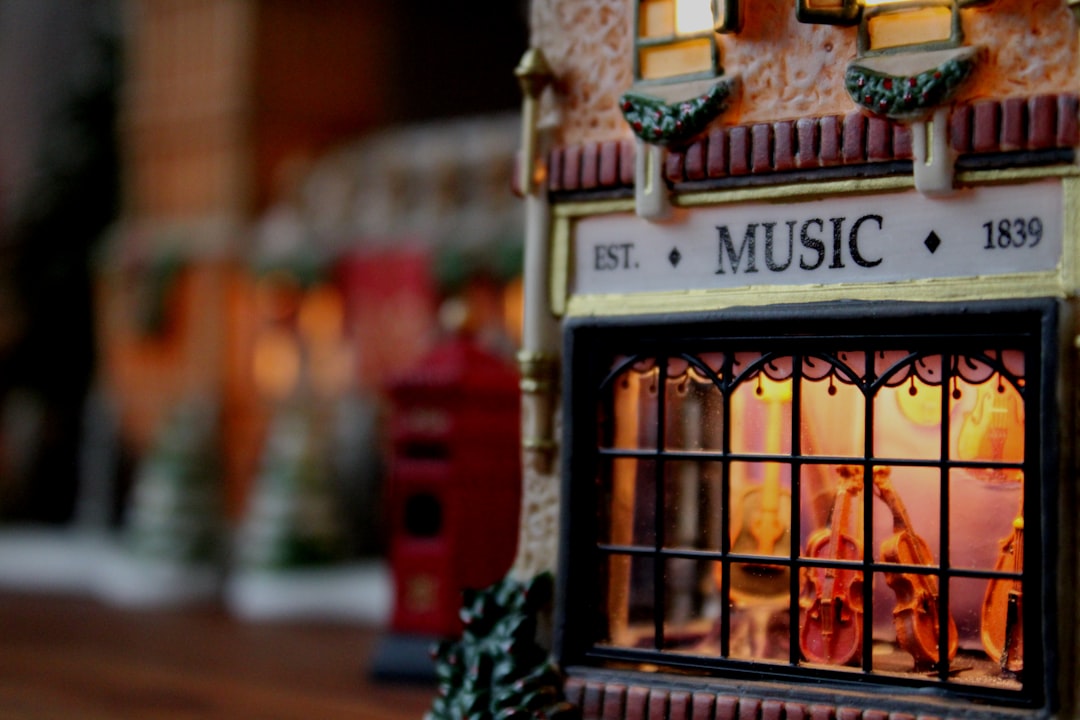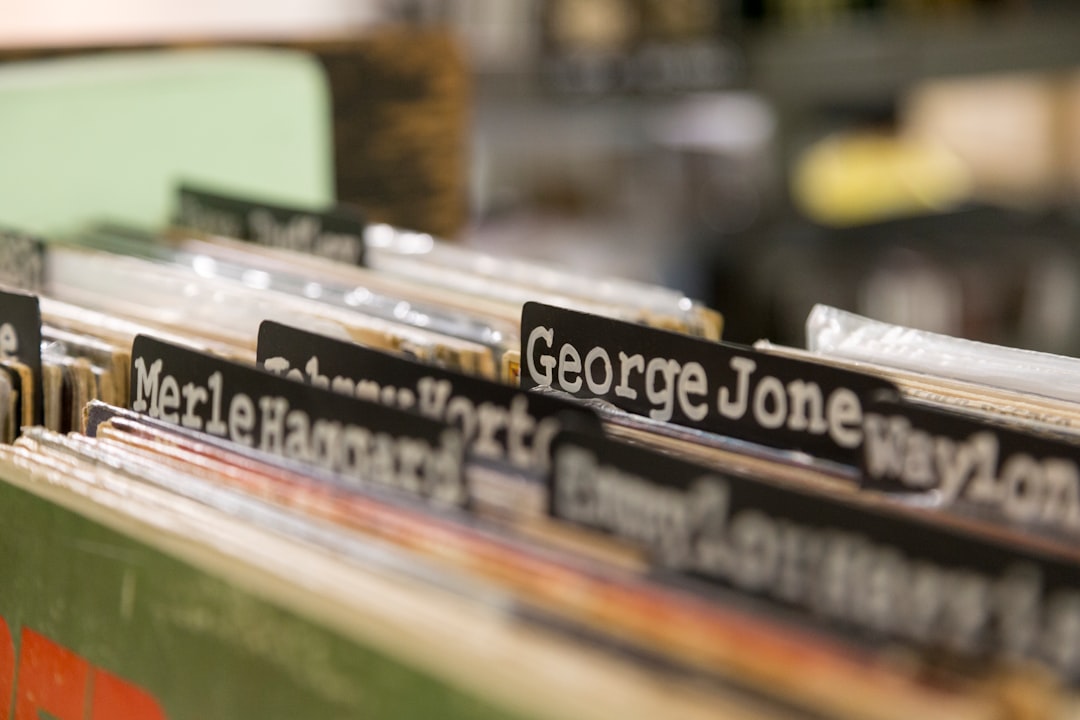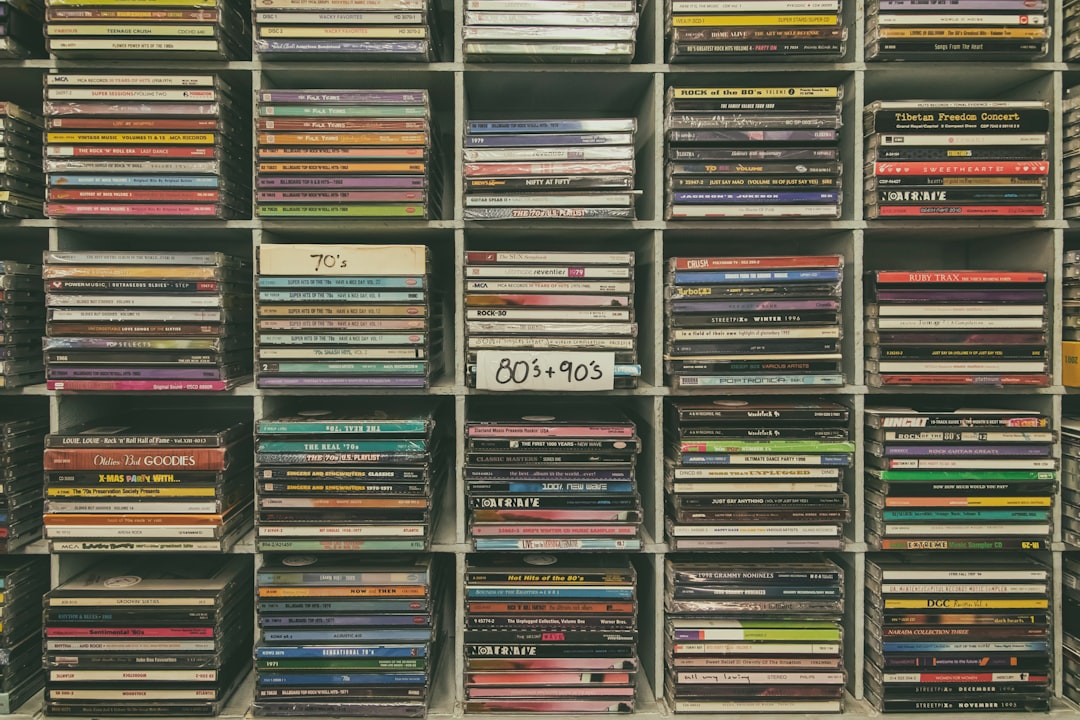

Engage prospects with a scan and streamline customer engagement with FREE QR code marketing tools by Sona – no strings attached!
Create a Free QR CodeFree consultation

No commitment

Engage prospects with a scan and streamline customer engagement with FREE QR code marketing tools by Sona – no strings attached!
Create a Free QR CodeFree consultation

No commitment
In today’s digitally driven world, QR codes in marketing have evolved from a novelty into a strategic powerhouse that bridges offline shopping with actionable digital journeys. For music stores, these compact patterns create instant pathways from album bins, instrument displays, and gig merch tables to streaming previews, demos, bookings, and offers that customers can act on in seconds. Shoppers do not need to download an app, which makes QR a frictionless onramp to content that deepens product discovery, fuels loyalty, and captures intent that would otherwise be lost.
Music retailers face persistent headwinds: fluctuating foot traffic, intense online competition, and too many anonymous interactions that never make it into a CRM. The result is missed follow-up and missed revenue. QR codes solve for this by transforming every physical asset into a measurable touchpoint. When a customer scans, you capture context like time, location, and content interest. That signal can trigger a follow-up email, a loyalty prompt, or a tailored offer that moves the buyer forward.
With the right deployment, QR codes modernize paper-based workflows and static print materials that offer little attribution. They surface engagement signals in real time, enable precise segmentation, and support continuous optimization. For music stores and independent artists, this shift turns once-fleeting interest into nurtured relationships and long-term growth.

Music retailers often struggle to capture and follow up with high-intent visitors who explore in-store but never reveal who they are. Paper flyers, brochure racks, and clipboards at the counter gather dust and rarely generate complete, usable data. QR codes replace those analog processes with instant, measurable actions that shoppers can complete in seconds on their phones.
To increase engagement, start by mapping the places where intent is already high. Place QR codes next to instruments, on vinyl sleeves, and at checkout. Connect each scan to a dedicated landing page with a clear next step, such as a playlist preview, a demo booking form, or a limited-time discount. When supported by a platform like Sona QR, you can route scans to dynamic destinations, capture analytics, and sync contacts into your CRM automatically.
By shifting key analog touchpoints to QR-powered experiences, music stores solve recurring pain points like lost demo interest and unknown event attendees. The result is a unified, scalable engagement system that gathers clean data at the source while improving customer experience.

Music stores struggle with a persistent disconnect between in-store activity and digital follow-up. A shopper might spend 15 minutes testing a synth, ask a couple of questions, then leave without a trace. A poster may drive interest in a listening party, yet there is no way to measure who saw it or how many acted on it. QR codes close these gaps by providing direct, trackable paths from the physical environment to digital action.
The impact is twofold. First, they improve customer experience by making information easy to access and actions quick to complete. Second, they transform anonymous interest into attributed engagement that you can nurture. With Dynamic QR codes, you can even update destinations after printing, ensuring promotions remain relevant and that you are not stuck with outdated collateral.
As a result, music stores can identify buyers earlier, tailor follow-up more precisely, and drive a measurable lift in conversion. You replace guesswork with insights that inform both merchandising and marketing.

Music stores benefit from a mix of QR code formats that map to both marketing and operations. The format you choose should match the action you want customers to take and the destination that best supports it. Dynamic codes are ideal for campaigns that evolve, while static codes suit permanent information like store hours or warranty details.
Each format opens distinct opportunities. For example, SMS triggers make it easy to book a repair appointment in seconds. Wi-Fi access helps visitors test streaming audio on the spot. App download links remove friction from joining your loyalty program. Think of formats as tools in a kit you can deploy across the floor, at events, and on packaging.
With a platform like Sona QR, you can create and manage all of these formats in one dashboard. You can also toggle dynamic destinations, add UTM parameters, and track performance without juggling multiple tools.

Growth often hides in plain sight. Anywhere a shopper lingers, asks a question, or expresses curiosity is a candidate for a QR code. The goal is to convert ambient interest into a measurable action and then guide that person to the next step in your funnel.
Audit your store and event footprint to identify the top five hotspots by traffic and intent. Add QR codes that shorten the distance between browsing and decision-making. Over time, compare scan rates across placements to find outsized winners and adjust inventory or staffing to match.
Focusing deployment on the moments and areas where interest peaks ensures that every interaction has a path forward. The outcome is better attribution, stronger segmentation, and more timely outreach.

QR codes shine when they make native music-store experiences easier and more rewarding. They remove friction from discovery, purchasing, and loyalty tasks while delivering clean data back to your systems. Start with use cases that align to your top goals, such as driving attendance, increasing accessories attachment rate, or growing your mailing list.
Make the experience clear with short, benefit-forward calls to action near each code. For audio-related use cases, be sure the landing page loads fast and plays nicely with mobile devices. For events or bookings, reduce form fields to essentials and confirm submissions instantly.
These use cases reduce drop-off, reclaim anonymous engagement, and deliver measurable lift in follow-ups. They also create audience segments that reflect authentic preferences, which fuels better targeting next time.
Every scan is a behavioral signal. Where it happened, what it linked to, and when it occurred tells you something about the scanner’s intent and stage in the journey. With thoughtful planning, you can create a mosaic of QR touchpoints that segment your audience automatically.
For music stores, meaningful distinctions include instrument browsers versus vinyl collectors, new visitors versus repeat buyers, and event attendees versus merch purchasers. Tagging scans with these distinctions lets you send relevant messages that feel helpful rather than generic.
With Sona QR, each code can carry metadata for placement and purpose, automatically enriching profiles and triggering the right workflow. You move from blasting the list to orchestrating journeys that match real behavior.
QR codes are connectors. They bind print, merch, events, and digital channels into one measurable system that follows a shopper from spark to sale. When integrated properly, they add a layer of attribution to previously opaque channels and enable timely, personalized follow-up.
The key is consistency: consistent branding on your codes, consistent calls to action, and consistent tagging so you can compare performance across channels. Build a simple taxonomy for placements and campaigns, then reuse it across assets for clean reporting.
QR codes serve as the offline onramp to your digital marketing engine. With a centralized platform like Sona QR, you can manage every code, monitor performance in real time, and sync scan data with your CRM and ad platforms to extend the journey beyond the scan.
Planning and executing a QR campaign is straightforward once you align goals, placements, and follow-up. Treat each campaign as a loop: deploy, measure, learn, iterate. The following steps will help you launch with confidence and scale what works.
Start by choosing a concrete objective that ties to revenue or retention. For music stores, top goals include selling more accessories with new guitar purchases, filling seats at release-day listening parties, or growing your email list with high-intent subscribers. Pick one use case for your first test so you can isolate impact.
Once you have a goal, map the offline moments that lead to that outcome. For example, if you want more RSVPs, the best placements might be on in-store posters, at the checkout counter, and in social posts promoting the event. Document how each placement will be tagged in your analytics tools to keep reporting clean.
Select between static and dynamic codes. Static codes work for destinations that never change, such as a permanent “about our repair shop” page. Dynamic codes are best for campaigns you plan to optimize because you can change the destination, update parameters, and gather scan analytics without reprinting.
Dynamic codes also support A/B tests and seasonality. For example, link the same printed code to different offers before and after the event. With Sona QR, you can manage these changes centrally, add UTMs for tracking, and view results by placement, device, and time.
Design your code and its context to be scannable at a glance. Use adequate size, strong contrast, and a quiet zone around the code. Add a short, benefit-focused call to action like “Scan to hear this week’s new releases” or “Scan to book a synth demo.” Include your logo or colors to signal trust.
Test the code from various distances, angles, and lighting conditions. Try multiple devices and both iOS and Android cameras. If the destination includes audio or video, confirm fast load times and mobile-friendly playback. A few minutes of testing prevents lost engagement that never gets a second chance.
Place codes where eyes go naturally, such as eye-level displays, endcaps, checkout, and event registration tables. Match placement to the behavior you want: a code near guitar straps should promote accessories, while a code by the turntable display should serve audio samples or bundle offers.
Roll out in waves so you can compare performance across locations. Assign a unique code to each placement to see what proves most efficient. As results come in, shift inventory, staffing, or creative toward the winners. Sona QR’s placement-level analytics make these decisions data-driven rather than gut-based.
Measure scans, conversion rate, and downstream actions such as sign-ups, bookings, and redemptions. Use UTMs and unique codes for clear attribution by source. Look for patterns by daypart, device, or content to refine CTAs and creative.
Iterate quickly. Update low-performing destinations, test alternative offers, and rotate codes to fresh placements. Close the loop by triggering post-scan workflows: send a thank-you, deliver a playlist, or follow with a limited-time discount. With Sona QR, you can monitor performance in real time and pipe data directly into your CRM for scoring and nurture.
Many music store teams invest in beautiful displays and posters only to walk away with guesses about impact. QR code analytics change that by connecting the first scan to subsequent actions like form fills, bookings, loyalty redemptions, and purchases. When you track the full path, you can allocate budget to what works and retire what does not.
The objective is to move beyond vanity metrics. Knowing that a poster was scanned is helpful, but the real unlock is understanding which scans led to ticket sales, which placements drove accessory bundles, and which segments responded to follow-up emails. A modern QR platform and connected analytics make this possible.
With Sona QR and Sona, you can track every scan, measure engagement by channel and context, optimize in real time, and sync activity to HubSpot or Salesforce. Sona.com’s attribution connects the dots from scan to sale, helping you forecast, budget, and prove impact across campaigns.
As you scale your QR program, a few best practices will help you capture more scans and convert more of them into meaningful outcomes. Prioritize clarity, consistency, and follow-up. Then experiment with creative placements that fit your store’s brand and audience.
Keep the operational load light by standardizing templates and workflows. Build a short checklist for staff to use when setting new displays or hosting events. Make adjustments based on actual data rather than hunches, and share wins widely so the team understands how QR supports store goals.
Start creating QR codes for free: Start creating QR codes for free. Set up dynamic codes, add UTMs, and launch your first campaigns in minutes, then build on what the data proves.
Successful programs often start with small, high-impact experiments. Look for moments where a QR code saves time, adds value, or reveals intent that was previously invisible. Then design a clear next step that delivers an immediate benefit to the scanner.
The most effective examples pair a relevant reward with a minimal ask. For instance, unlock a playlist or a behind-the-scenes interview in exchange for an email opt-in. Or let shoppers book a 10-minute hands-on demo with one tap at the display, then confirm by text.
These examples illustrate the core principle: make every physical moment of music discovery scannable, then transform it into a digital relationship you can measure and grow. For more peer-tested tactics, see community ideas.
QR codes work best when they are easy to see, clear in value, and aligned with a specific next step. Poor visibility, vague CTAs, and long forms suppress results. Design with context in mind: a code on a busy wall should be larger with a bold frame, while a code on packaging can be smaller but supported by a concise message.
Avoid deploying and forgetting. QR codes are a living channel that benefits from iteration. Review analytics regularly, rotate underperforming placements, and refresh offers to prevent fatigue. Treat QR campaigns like any other performance initiative with goals, testing, and optimization.
QR codes are much more than a passing trend in retail technology; they are a strategic lever for music stores determined to turn fleeting offline interactions into measurable, revenue-driving digital action. As competition grows and customer journeys become more fragmented, the risk of missing high-fit prospects or losing track of engagement signals increases. QR codes meet these challenges by bridging analog and digital, making every in-store moment both actionable and trackable.
Leading music retailers are adopting QR technology not only for promotional flair but also as a foundation for multi-channel attribution and customer understanding. With every scan, intent becomes visible, nurture timing improves, and campaign optimization becomes continuous and evidence-based rather than speculative. Platforms like Sona QR and Sona.com make this transition practical by centralizing code management, analytics, and attribution to revenue.
By embracing QR codes strategically, music stores can replace outdated processes, close segmentation gaps, and power high-impact retargeting that strengthens both sales and loyalty. Now is the time to transform every display, album jacket, and event into a gateway for deeper engagement. Start with one focused use case, measure results, and expand confidently using the insights your scans surface.
QR codes have transformed music stores from simple retail spaces into interactive hubs of discovery and engagement. Whether it’s attracting new customers, enhancing in-store experiences with instant access to song samples and artist info, or driving sales through exclusive promotions, QR codes turn every display and product into a dynamic, measurable touchpoint.
Imagine knowing exactly which albums or instruments spark the most interest and being able to update your campaigns instantly without reprinting materials. With Sona QR, you can create dynamic, trackable QR codes in seconds, connect every scan to real revenue, and optimize your marketing with real-time data. No missed opportunities—just smarter strategies that amplify your store’s impact.
Start for free with Sona QR today and transform every scan into a deeper connection, a loyal customer, or a completed sale.
Music stores can place QR codes on album bins, instrument displays, and merch tables to provide instant access to streaming previews, demos, bookings, and offers, enabling shoppers to discover products and engage quickly without needing an app.
QR codes bridge offline shopping with digital journeys, capture measurable engagement data, improve customer experience by providing instant access to content, allow dynamic updates without reprinting, and enable precise segmentation and follow-up.
Independent musicians can add QR codes to shirts, posters, and merch that link to mobile stores and mailing list sign-ups, capturing high-intent listeners during shows and enabling targeted follow-up with exclusive offers.
Creative uses include placing QR codes on vinyl inserts to unlock exclusive tracks and artist interviews, adding codes to gig merch to open mobile stores, and using small-format codes on guitar picks or turntable mats that link to lessons or care tips.
QR codes convert anonymous shoppers into trackable leads by linking physical displays to digital actions like demo bookings and loyalty sign-ups, providing data to optimize inventory, staffing, and promotions, which leads to higher conversion and sales.
Use Sona QR's trackable codes to improve customer acquisition and engagement today.
Create Your FREE Trackable QR Code in SecondsJoin results-focused teams combining Sona Platform automation with advanced Google Ads strategies to scale lead generation

Connect your existing CRM

Free Account Enrichment

No setup fees
No commitment required

Free consultation

Get a custom Google Ads roadmap for your business






Launch campaigns that generate qualified leads in 30 days or less.
